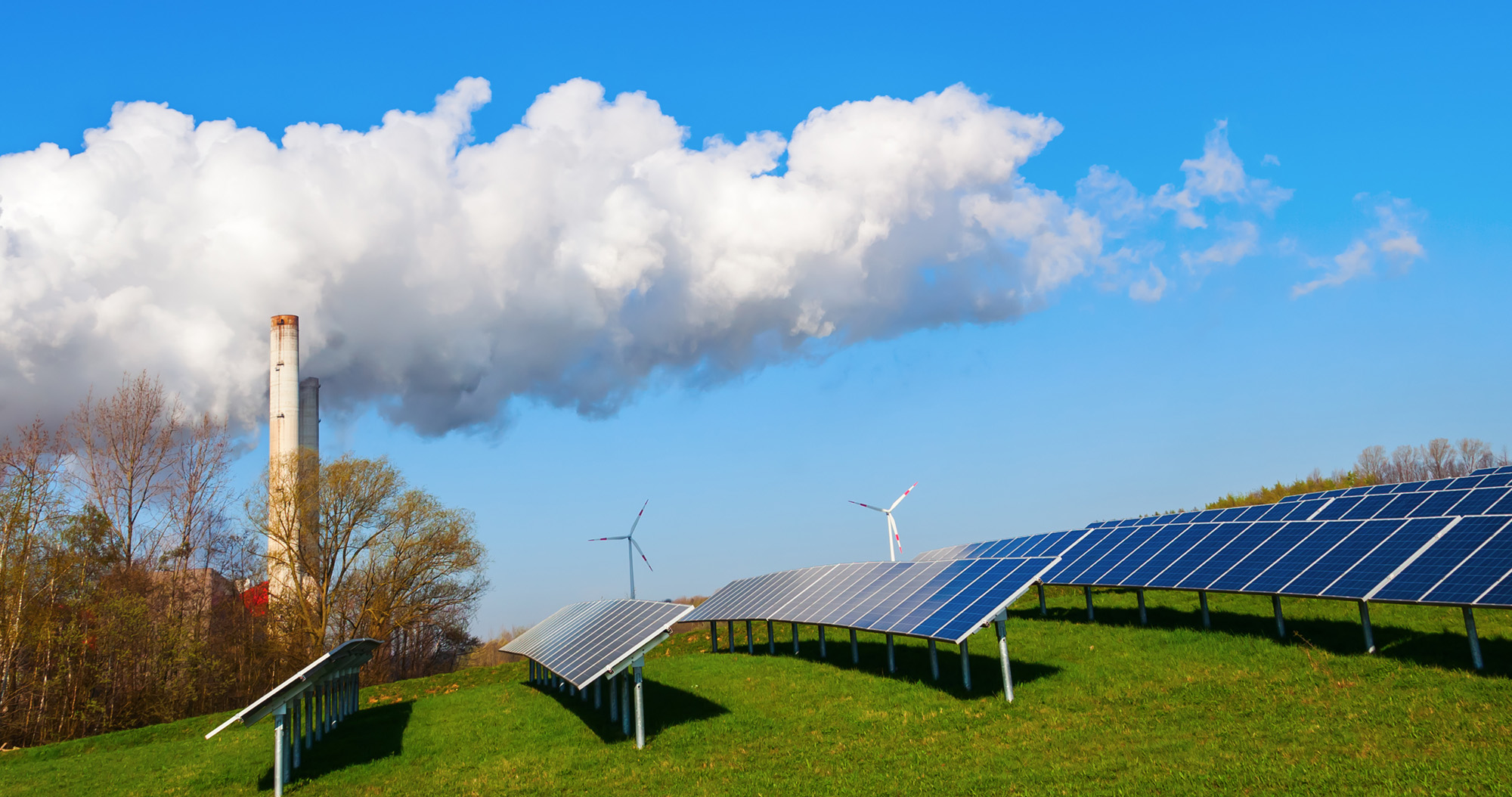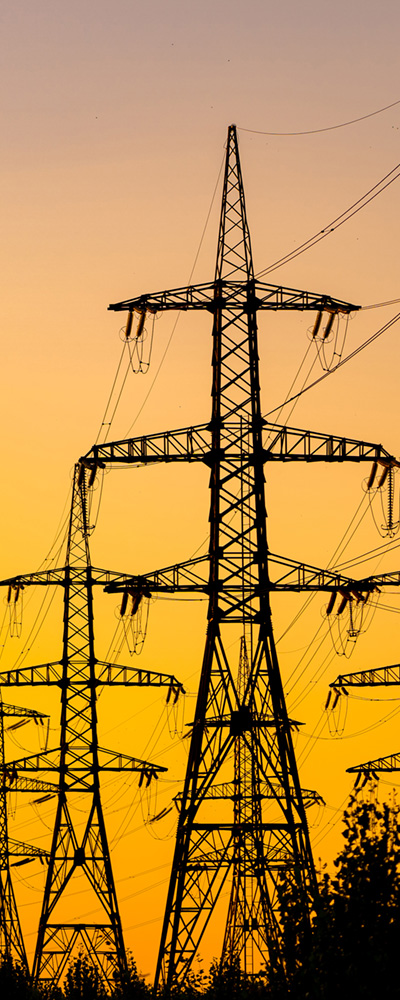Hatchings
JULY 2022 – ISSUE 6
Our thoughts on the energy transition
Stephen Butel
Kristen Le Mesurier
In an attempt to prevent blackouts and astronomic wholesale power prices across the east coast of Australia, the energy market regulator took an incredible step in June – it intervened to set the wholesale energy price then directed generators to supply power to the grid.

The extraordinary suspension of the National Electricity Market (NEM) by the Australian Energy Market Operator (AEMO) on June 15 showed how fraught the transition from a carbon intensive grid to renewables might be for society, especially if it’s not planned well.
It was an acknowledgement that the market was failing at that time – the NEM was incapable of providing eastern Australia with enough power at reasonable prices.
What happened? The intervention explained
What happened? The intervention explained With 25% of coal fired power generation on the east coast being offline in early June, high energy demand because of cold days, and a network not set up to store the sheer scale of rooftop solar that exists these days, there was a risk of insufficient energy generation on the east coast of Australia.
At the same time, high coal and gas prices because of Covid-related supply chain disruption and the invasion of Ukraine had made energy generation using coal and gas expensive.
In the days leading up to AEMO’s intervention, NSW’s wholesale price briefly hit a maximum of $15,100 per megawatt-hour (prices typically average around $80 per megawatt-hour).
In order to manage the cost of power bills for consumers, AEMO set a price cap of $300 a megawatt-hour on June 15. Some generators who would have lost money at the capped price withdrew capacity from the market in response, effectively forcing AEMO to direct plants to operate paying them on a cost-plus basis.
The market has since been restored, largely because some coal fired power capacity has come back into the market and more generators started bidding to supply power.
Without more reliable energy generation in the short to medium term, there is every chance AEMO will be forced to intervene again.
So what’s needed to ensure the energy transition is managed well in the next few years?
1. A strong regulatory framework with alignment across all levels of government -state and federal.
For over six years the private sector has not had a clear framework in which to make long-term investment decisions on energy infrastructure. With medium-term visibility over Australia’s transition pathway, investments in large-scale firmed renewable generation may well stack up and be attractive to the private sector. While Australia’s short three to four year electoral cycle make this challenging, all sides of politics across all levels of government should be able to agree on a transition pathway with short, medium and long-term goals irrespective of the government of the day.
2. A realisation from both sides of political spectrum that fossil fuels are the key to short-term energy security.
The extraordinary few weeks in June showed that the east coast of Australia desperately needs modern new power generation like pumped hydro, batteries and gas turbines, not ageing and breaking coal power stations.
We also need reserve power generation when coal unexpectedly breaks down or circumstances lead to extreme events. This means investing in new flexible capacity that is ready when we need it.
Until renewable firming capacity is built, gas peaking is the fastest way to guarantee short-term energy security. Gas generation is relatively expensive though, which should incentivise a fast transition to large scale pumped hydro and/or grid scale batteries.
3. A clear and concise carbon pricing mechanism.
If the public has a clear understanding of the carbon footprint of their purchases they are likely to make their informed decisions with emissions in mind. For example, they are likely to choose more energy efficient appliances or electric cars instead of petrol cars. We suspect that Australians want to contribute to the transition, but they don’t know how to do that as individuals.
4. Government support for the transition.
The government will need to support and incentivise people to do their bit. For example, consumers will need to change from gas to electric heating and cooking, install household solar and batteries and buy electric vehicles. Additional assistance will be needed for low-income groups who will suffer financially or be left behind if they are not supported.

How are we investing with this in mind?
Until an adequate domestic investment backdrop exists, our preferred exposures to the energy transition as an Australian equity fund manager are Macquarie Group for its Green Investment Group which has significant renewable investments across Australia and the globe and Mineral Resources Limited (for Lithium) and OZ Minerals (for Copper). Both MinRes and OZ minerals have Tier 1 asset bases exporting critical minerals to the global battery supply chain.
This investment backdrop is crucial because as an Australian equity fund manager, Platypus aims to deliver strong returns to investors. Our job when it comes to the transition, and climate change more generally, is to understand the impact of the energy transition on earnings and invest accordingly.
Thematically, the minerals that go into batteries are an attractive investment. When we think more generally about climate change across our investment universe, we analyse a range of issues including the speed and way a company is decarbonising its business, the ability to get new projects approved, the risk of stranded assets, and the price of carbon offsets. These issues all factor into our decisions to buy or sell companies in the Platypus Australian Equity Fund.
Disclaimer: Issued by Platypus Asset Management Pty Ltd ABN 33 118 016 087, AFSL 301294 (PAM). This material provides general information only and does not take into account your individual objectives, financial situation, needs or circumstances. Prior to investing in any financial product, an investor should determine, based on its own independent review and such professional advice as it deems appropriate, the nature and extent of economic risks and merits, the legal, tax accounting characteristics and risk, and the consequences of an investment in the financial product. This material is not a financial product recommendation or an offer or solicitation with respect to the purchase or sale of any financial product. While every care has been taken in the preparation of this material, no warranty of accuracy or reliability is given and no responsibility for the information is accepted by PAM, its officers, employees or agents.

